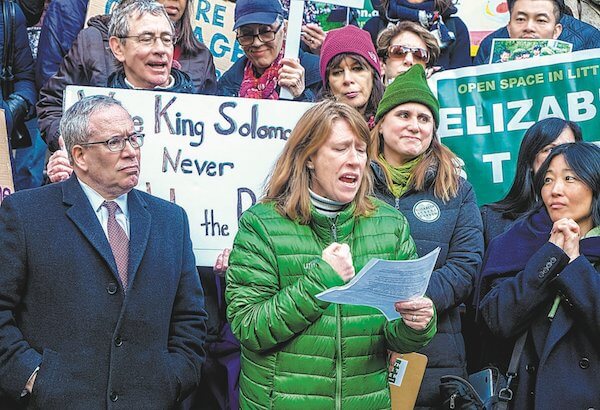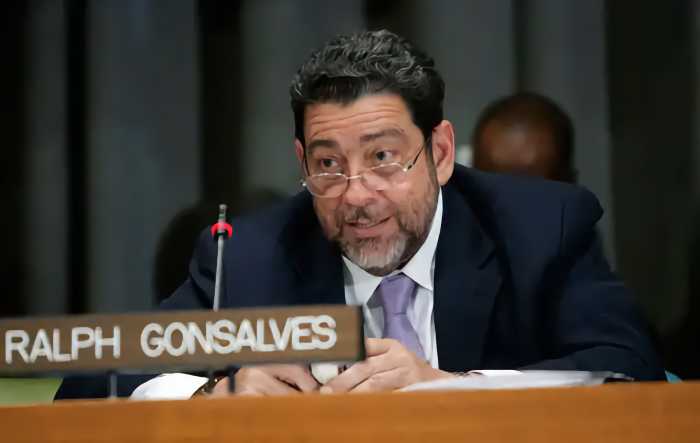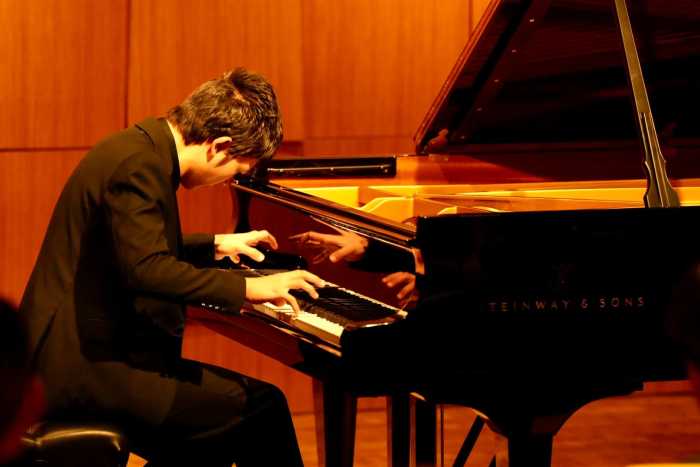New York City Comptroller Scott Stringer. | NYC OFFICE OF THE COMPTROLLER
A survey of LGBTQ residents of New York recently completed by City Comptroller Scott Stringer points to clear disparities in employment and housing opportunities, food security, and public safety that respondents experience due to their sexual orientation or gender identity and expression.
And despite one score in which the LGBTQ community seems better situated than the average New Yorker – access to private health insurance – transgender and other gender-nonconforming (GNC) members of the community report widespread discrimination and harassment in the full spectrum of care environments.
Stringer’s findings are all the more telling since the survey of 359 respondents was not based on a scientific sample. Those participating were disproportionately from Manhattan and from the non-Hispanic white population, and they skewed younger, better educated, and wealthier than New York City residents generally.
Community profile highlights particular disadvantages based on gender identity, race, ethnicity
That fact is significant given that the disparities found in the comptroller’s report were greatest in communities of color and among transgender and other GNC respondents. Stringer’s effort – which relied on social media and outreach to advocacy and service organizations – did yield a strong response from the transgender community, with 10 percent of the sample identifying as trans, while 47 percent said they were cisgender (that is, not transgender) males and 40 percent cisgender females.
Commenting on the survey results, Stringer said, “We’ve made big strides, but there is undoubtedly more to do. No one should face economic insecurity, harassment, or unequal public treatment because of who they are or who they love. We launched this survey to pinpoint the gaps in services, identify where New York City can improve, and spotlight how we can be a more inclusive city. In 2017, too many states across America are fixated on backwards ‘bathroom bills’ and want nothing more than to turn back the clock on progress. New York City must continue to be a leader when it comes to building communities where everyone feels safe and respected.”
Among survey respondents, more than one-fifth, or 21 percent, said they had faced employment discrimination in the form of not being hired, not being promoted, or being fired or forced to resign because of their LGBTQ status. As with many other measures in the survey, trans and GNC respondents reported greater discrimination in employment, with 42 percent of them reporting such adverse impacts.
A far larger nationwide study of transgender Americans carried out by the National Center for Transgender Equality (NCTE) in 2015, with a total sample size approaching 28,000, found that 30 percent of respondents cited such discrimination.
In the area of housing, nearly one fifth, or 18 percent of respondents, indicated they had experience with homelessness during at least one period in their life. Here, disparities within the overall sample existed on both racial/ ethnic lines and on the basis of gender identity.
Forty percent of Hispanic respondents said they had been homeless during their lives, 27 percent of blacks, and 23 percent of Asians, while only 10 percent of white respondents said they had.
Among transgender and GNC respondents, 38 percent said they had experienced homelessness versus 30 percent among the 2015 respondents to NCTE’s nationwide survey.
Among the New Yorkers who experienced homelessness, 30 percent said they had accessed a city shelter, and 79 percent of that group said they found the experience “very unsafe,” with another 11 percent describing it as “unsafe.” From that Stringer concluded that the city needs to “focus on enhancing security inside homeless shelters,” though this finding likely also speaks to the vulnerability that an LGBTQ person in particular might feel in such an environment. At present, the city is providing for specific LGBTQ-welcoming shelters only for homeless youth under 21.
More than one third of all respondents said they had relied on government assistance during the previous five years, with 18 percent seeking food support, 12 percent unemployment insurance, eight percent education or job training, and seven percent HIV/ AIDS benefits.
Food insecurity was greatest among transgender and GNC respondents (at 33 percent) and Hispanic respondents (at 31 percent).
Black respondents and male respondents disproportionately accessed HIV/ AIDS services.
Access to private health insurance was unusually high among respondents to Stringer’s survey, with 72 percent having access either through their employer, somebody else’s employer, or by purchasing their own insurance – sharply higher than the 45 percent level among city residents generally. Twenty-one percent of respondents used a government health care program – 11 percent Medicare and 10 percent Medicaid. Just over a quarter of Hispanic respondents relied on Medicaid.
Nearly two-thirds, or 63 percent of all survey respondents got their medical care in private doctor’s offices, while 17 percent accessed community health centers, and 10 percent emergency room or urgent care centers. Among transgender and GNC respondents, only 30 percent visit private doctor’s offices, while 41 percent go to community health centers. Hispanic and Asians respondents were also more likely than the survey sample overall to access community health centers.
While 18 percent of women said they had visited emergency rooms or urgent care centers, only four percent of males had.
If the LGBTQ community has better than average access to private health insurance, the health care picture is not all good. Overall, 47 percent of the survey participants said they had been denied public services or been subjected to verbal or physical harassment in public – in a wide array of contexts – with that number rising to a staggering 70 percent for transgender and GNC respondents. Trans and GNC participants cited health care settings – from doctor’s offices to emergency rooms to long-term care facilities – as particularly problematic places for being treated with respect and dignity.
Among the survey sample overall, respondents listed public transportation as the service where they most likely encountered unequal treatment or threats of harassment, followed by retail establishments, restaurants, hotels, and theaters.
Stringer, in his conclusions, put particular emphasis on the need for the training of public transportation staff and health care workers, though the survey did not probe interactions between the LGBTQ community and law enforcement personnel, where there has long been a history of disparate treatment.
Of the 359 respondents, 48 percent resided in Manhattan, 29 percent in Brooklyn, 12 percent in Queens, nine percent in the Bronx, and three percent in Staten Island. Whites made up 65 percent of the sample, Hispanics 19 percent, blacks nine percent, and Asians six percent. The sample skewed younger than the city’ s population overall, and fully 83 percent of the respondents reported having at least a bachelor’s degree, well beyond the average level in the city. On income, too, the sample was atypical, with 45 percent reporting household income exceeding $75,000, versus 37 percent for the population as a whole.


















